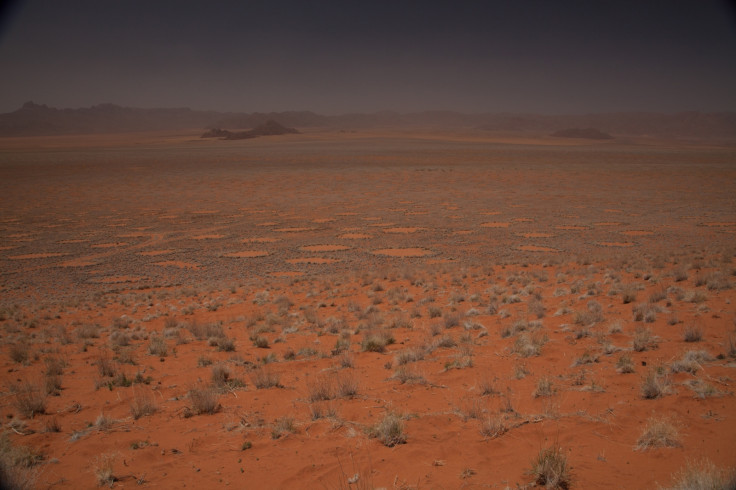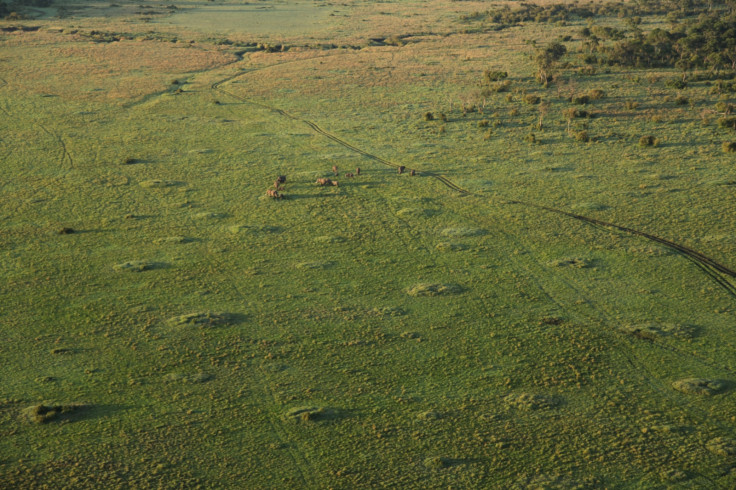Enduring mystery of Africa's fairy circles finally solved
Warring termites and resource competition combine to create weird circular arid grass formations in Namibia.
The longstanding mystery of the Namibia's fairy circles appears to have finally been solved. The huge spherical patches of arid grass found in the Namib Desert have long baffled researchers, with two main theories emerging – subterranean termites or vegetation resource competition.
Namibian fairy circles are patches of barren land surrounded by grass, some of which can reach up to 50ft in diameter. They were first mentioned in scientific literature in the 1920s and for almost a century, similar features were not found anywhere else on Earth.
However, in 2014 scientists announced the discovery of fairy circle formations in Western Australia. Other landscapes with evenly spaced elements (but not fairy circles) include the North American Mima mounds, Brazilian murundus and the South African heuweltjies.
Possible causes
Subterranean termites were initially thought to have been responsible for the fairy circles in Namibia. Scientists thought these ecosystems created beneath the surface by insects nibbling away the roots of the grass and causing the dieback of vegetation. This has largely been dismissed as being implausible – there is no evidence of insects beneath the circles, nor are they known to make such consistent patterns.
The other argument is to do with resource competition – in order to survive without much water, the grass self-organises, leaving patches of land bare. But this theory also comes with a major drawback – if it is correct, similar formations should be seen across all arid ecosystems.
A combination of both?

In a study published in Nature, scientists have now said Namibia's fairy circles appear to be a mix of termites and resource competition. An international team of researchers led by Corina Tarnita of Princeton University created models combining the two theories and looked at how they held up at four different sites where these formations are found.
Tarnita had previously proposed a combination of factors played a role in their formation, but the latest study validates the models with field data from four different continents.
In the latest study, the team found that insect colonies organise themselves underground, with rival colonies competing with one another. This competition between the different colonies can lead to the regular spacing of these features. But further to this, they found competition between the sand termites and the grass plays a role in creating these multi-scale patterns.

"In this coupled model, termites and vegetation dynamically self-organise and interact," the team wrote. "Bare fairy circle discs with elevated soil moisture emerge around nests under arid conditions. If rainfall increases, however, plant regeneration outpaces termite-induced mortality, and fairy circles revegetate... Fairy circles emerge quickly following colony establishment, but disappear more slowly after colonies die, as grasses invade and eventually fill the bare patches."
Concluding, the team said the results show interactions between insects and vegetation can explain a whole host of regular spatial patterns found in nature. They said advances in satellite imaging has helped study self-organisation in ecology, but it has not yet revealed instances on smaller scales.
"The potentially global extent of animal-induced regularity in vegetation – which can modulate other patterning processes in functionally important ways – emphasises the need to integrate multiple mechanisms of ecological self-organisation," they said.
© Copyright IBTimes 2025. All rights reserved.






















